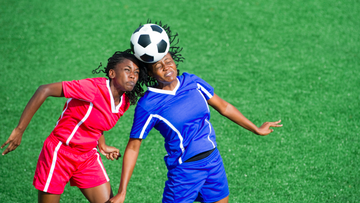Youth: 7 Ways to Reduce COVID-19 Risks at Soccer Practices and Games
Feb 1, 2021
*This article is part of an educational series for soccer parents and players new to soccer*
We’ve hit a year of COVID-19 lockdowns, closures and sacrifices. And although vaccines are making their way into arms, the pandemic is still putting people at risk. As the weather gets warmer, lockdown measures will start to lift, but it is important to be cautious and take precautions to limit the risks and keep people safe even when soccer practices and games begin to resume.
In this post, we’ll look at some practical strategies for players, parents and coaches to take to reduce the risk of spreading the Coronavirus during soccer games and practices.
1. Key Strategies
Many of these strategies are the same suggestions put forward by public health to limit the spread of COVID-19. They can also be applied to soccer games and practices to reduce the risk of virus transmission.
2. Risk Assessment
It is essential to assess the risk for your group and your community. Every region will have a different health risk and different rates of community spread. What is considered safe in one part of the country will be very different from another area. Players, coaches and parents should follow public health guidelines and recommendations at all times in regards to limiting COVID-19.
You should also pay attention to the age of the players involved. Younger players may have more difficulty following the guidelines and restrictions. In this case, it may be better to focus on skills building rather than playing games.
3. Physical Distancing
Everyone should maintain physical distancing at all times. This includes on players’ benches and in any changing areas. Players should consider changing into their uniforms before arriving at practices or games to limit time spent inside and take turns using the change room. Players should also limit their time in close contact with others when not in active play, such as during practices or waiting on the sidelines.
4. Wear A Mask
When physical distancing is not possible, everyone should wear a mask. Be sure all players, coaches and staff are wearing masks consistently and correctly over their nose and mouth. Have extra masks available in case someone forgets or their mask gets soiled.
5. Reduce the Length of Time Players Spend With Each Other
Public Health guidelines state that being within 6 feet of someone who has COVID-19 for a cumulative total of 15 minutes or more in a 24-hour period greatly increases the risk of becoming sick. Limit the time that players are in close contact with each other by only allowing close contact during games or limiting the number of games in a season. Players should also stay outside the practice field with their parents or guardians and wait for designated times rather than grouping together before practice.
6. Disinfect Surfaces and Wash All Gear Regularly & Thoroughly
Clean all surfaces that come in contact with individuals, such as gear and balls and disinfect high touch surfaces regularly. Minimize equipment sharing and disinfect shared equipment.
7. Have a Plan For If a Player Feels Sick
There should be clear guidelines for what to do if a player feels sick. Every player should do a self-assessment before arriving at practice or a game. If they do feel ill or show any symptoms of COVID-19, they must self-isolate and contact public health to arrange for a COVID-19 test. All other players who came in close contact with the individual should also self-isolate. Be sure there is clear communication through the soccer team about any needs to self-isolate.
We’re all looking forward to a time when we can play soccer together, and that time will come. In the meantime, let’s keep each other safe and follow the recommended guidelines.

